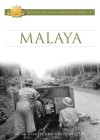Malaya
Written by: Brian Farrell and Garth Pratten,
Army History Unit, Canberra, 2009.
ISBN: 9781921941689, 254pp
Reviewed by: Mark Johnston
The Second AIF was a magnificent force, but it was on the receiving end of several heavy defeats. Inevitably, these defeats raise some questions about its performance. One of these controversial campaigns, Malaya, is the subject of the latest instalment of the ‘Australian Army Campaigns Series’. Brian Farrell and Garth Pratten have written a penetrating and sophisticated analysis of the 8th Division’s experience there. They are well qualified to write on the subject. Professor Farrell works at the University of Singapore, and is a leading authority on the campaign. Dr Pratten is a senior lecturer at Sandhurst and author of Australian Battalion Commanders in the Second World War, one of the best books on the Second AIF. Both write with the confidence that comes from being experts in the field, and do not hesitate to be critical where they consider it necessary.
That not everyone will be savaged is apparent in the dedication of the book to ‘the men of the 8th Australian Division—soldiers, not prisoners’. In the introduction the authors write that in Malaya, ‘when given their chance, Australian troops fought with courage and determination’. The problem, as they explain in the 238 pages that follow, is that those troops were often not given a chance. The main theme of the book is that the tragic outcome of the Malayan campaign was a result not of inadequate fighting qualities in the common soldiers but of poor leadership. That failure occurred at every level from the grand strategic to the tactical, from prime ministers and generals to battalion commanders.
The authors are keen to avoid the sort of ‘shallow cliches’ that characterise much Australian military history, and acknowledge that Australians ‘were just as complicit in the eventual defeat in Malaya as any of their alliance partners’.
The exposition of this argument is superb. The first three chapters set the scene, explaining Australian and British reliance on the ‘Singapore strategy’, how British entanglement in a European war compromised that strategy, and how an under-strength 8th Division was deployed to Malaya. The Japanese approach to the campaign is explored in fascinating detail, as is the ‘driving charge’ strategy that brought them victory against a slow-moving opponent with superior numbers but inferior strategy, tactics and morale. This book looks at ‘both sides of the hill’.
A substantial portion dissects the famous Australian actions at Gemas, Bakri, Parit Sulong and less well known ones like Mersing, Nithsdale Estate and Ayer Bemban. The exposition of these battles is meticulous. Characteristically, Pratten pulls apart shibboleths about Australian performance. He points out for example, that for all that the Australians repeatedly matched or outfought the Japanese tactically, there were many lost opportunities and all the battles ended in retreat. The division’s GOC, Bennett, emerges as a complex but flawed commander, unable to cooperate with coalition partners and prone to errors that compromised otherwise sound plans; for example, in leaving his own flank exposed at Muar when he planned to launch a smashing flank attack on the Japanese. Another salutary theme is the repeated Australian failure to use combined arms effectively.
The emphasis in this book is primarily on analysis rather than mere narrative. It would be difficult to imagine this done better, for the discussion is backed by superb full colour maps, some of them from the war diaries of the units involved, and by many colour photographs of battlefields. Indeed this is a quite beautiful military history book; the reader can open it randomly and expect to find excellent illustrations such as full colour photographs of the main weapons of both sides, organisational tables, maps, and large contemporary black and white photographs from varied sources. Most Australian official photographs from Malaya were taken before operations began and were often scantily captioned, but here the authors have integrated them into the book effectively. Captions are informative throughout. There are also colour drawings of the main aircraft and of typical Japanese and Australian servicemen. The latter two drawings are disappointing, and not up to the standard of the Osprey productions with which they will inevitably be compared.
Ideally there would have been more of the voices and experiences of the individual diggers, rather than an emphasis on actions at the battalion level and above. Nevertheless, there is some vivid writing, and it will be a hard-hearted reader who is not moved by the account of Lieutenant Colonel Anderson’s troops in their epic fight at Parit Sulong. That fight ended in a massacre of Australian wounded, and the brutality of the Japanese could have been discussed in more detail. It is also a pity that the wonderful erudition that has produced this book is not demonstrated in footnotes or references, rather than a mere two-page bibliography.
In short, this is an authoritative, nuanced and outstandingly produced book. The frustrating and saddening tale has much to teach later generations of military leaders. It will also leave them wanting to read the promised sequel, on the even more catastrophic and contentious battle for Singapore.

